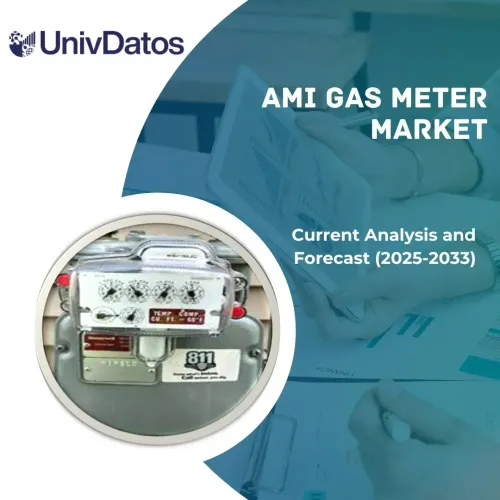- Home
- About Us
- Industry
- Services
- Reading
- Contact Us
Asia Pacific Battery Recycling Market: Current Analysis and Forecast (2024-2032)
Emphasis on Chemistry (Lead Acid, Lithium-Based, Nickel, and Others); Source (Automotive, Industrial, Consumers & Electronics, and Others); and Region/Country
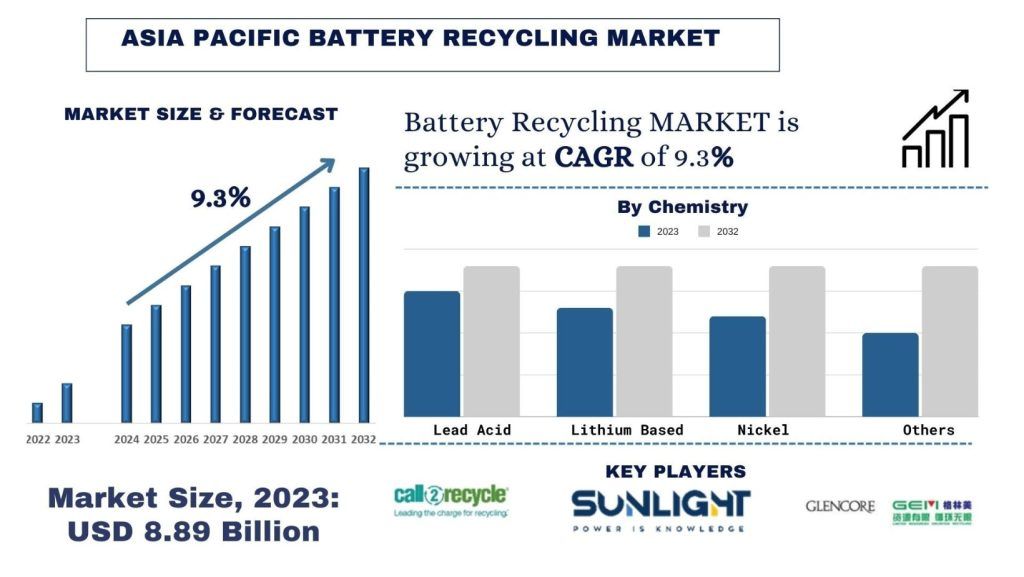
Asia Pacific Battery Recycling Market Size & Forecast
The Asia Pacific battery recycling market was valued at USD 8.89 billion in 2023 and is expected to grow at a strong CAGR of around 9.3% during the forecast period (2024-2032). Owing to rising investments and growing technological advancements.
Asia Pacific Battery Recycling Market Analysis
Battery recycling is a crucial process for environmental sustainability and resource conservation. By reclaiming materials like lithium, cobalt, and nickel from used batteries, recycling not only reduces the demand for new raw materials but also minimizes the environmental impact of hazardous waste. The process involves collection, sorting, and dismantling batteries to extract valuable components for reuse in manufacturing new batteries or other products. Proper battery recycling helps mitigate pollution, reduces energy consumption, and promotes a circular economy by closing the loop on valuable resources. However, improving infrastructure and awareness around battery recycling remains essential to maximize its benefits and minimize its environmental footprint.
Asia Pacific Battery Recycling Market Trends
This section discusses the key market trends influencing the various segments of the Battery Recycling Market as identified by our research experts.
Lead Acid
Based on the chemistry, the market is segmented into lead acid, lithium-based, nickel-based, and others. The lead-acid segment is expected to witness significant growth during the forecast period. Lead-acid battery recycling held a significant share in the market owing to cost-effectiveness and a well-developed supply chain. Further, lead-acid batteries are highly recyclable, with several countries achieving recycling rates of over 90%. However, lowering the cost of lithium-ion batteries and increasing the adoption of electric vehicles would increase the demand for lithium-ion batteries. As a result, the recycling rate of lithium-ion batteries would also increase since the average life of lithium-ion batteries is about 10 years.

China is Expected to Grow with Significant CAGR During Forecast Period
China is the largest producer and seller of automobiles. For instance, in 2020, the country produced around 25 million vehicles, including cars and commercial vehicles. Further, the country has the largest number of smartphone users. In addition, lower recycling costs, less stringent environmental regulations compared to Western economies, and a large and growing number of recycling plants in the country are some of the key attributable factors to the growing battery recycling market in the country. Further, the country is the largest consumer of electric vehicles, which is also creating a huge growth opportunity for the companies engaged in recycling services, as these batteries have limited average life. After that, these batteries can be recycled, which also has commercial value as it contains several rare metals.
Asia Pacific Battery Recycling Industry Overview
The battery recycling market is competitive and fragmented, with several Asia Pacific and international players. The key players are adopting different growth strategies to enhance their market presence, such as partnerships, agreements, collaborations, new product launches, geographical expansions, and mergers and acquisitions. Some of the major players operating in the market are Call2Recycle Inc., Battery Solutions LLC, Umicore N.V., Contemporary Amperex Technology Co. Ltd., GEM Co. Ltd., EnerSys, Johnson Controls International plc., Aqua Metals Inc., Exide Industries, and Sunlight Battery.
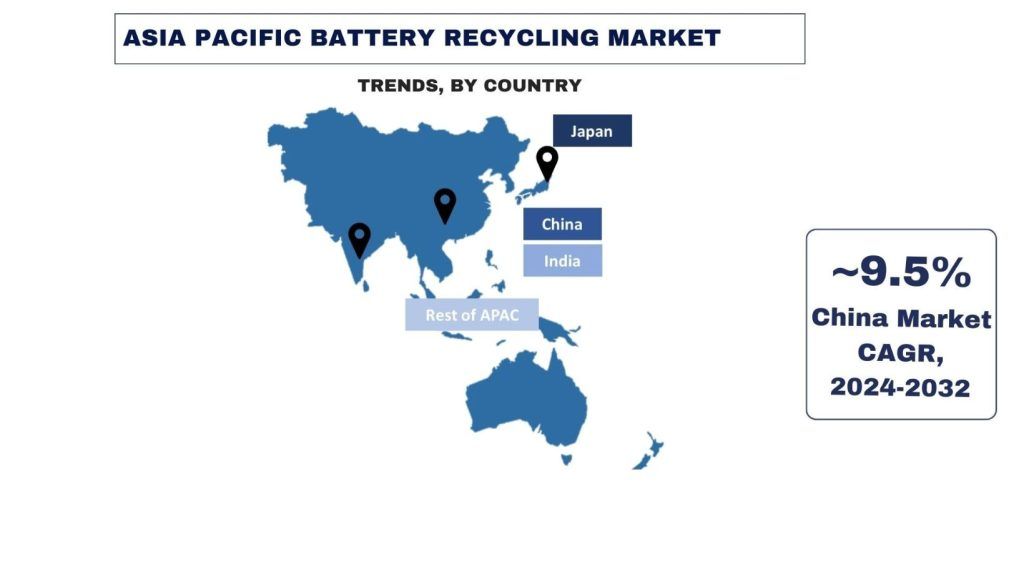
Asia Pacific Battery Recycling Market News
For instance, Japan announced in 2021 that it will strive for 46% emissions reduction by 2030 to achieve carbon neutrality by 2050.
For instance, by 2030, the Indian government intends to have a fleet that is 30 percent electric. In addition, the goods and services tax (GST) on EVs was reduced from 12 percent to 5 percent in July 2019, and income tax exemptions for potential EV buyers were announced by the Indian government.
For instance, on Oct 22, 2022, the Industry Ministry said that the subsidies to be disbursed this year under the so-called PERTE scheme using EU pandemic relief funds would rise to 877 million euros ($860 million) from 600 million euros, meaning the total planned amount of nearly 3 billion will be slightly more front-loaded.
Asia Pacific Battery Recycling Market Report Coverage
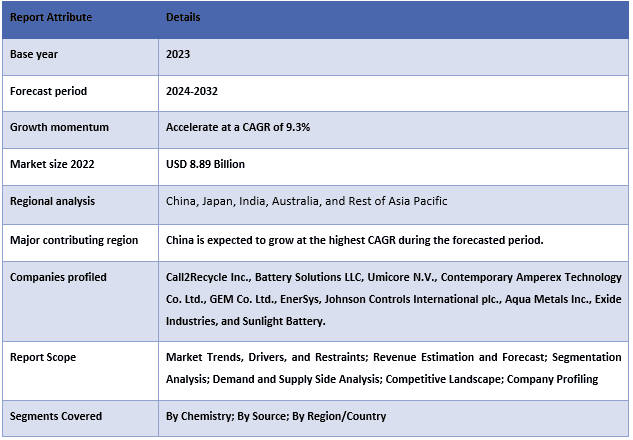
Reasons to buy this report:
- The study includes market sizing and forecasting analysis validated by authenticated key industry experts.
- The report presents a quick review of overall industry performance at one glance.
- The report covers an in-depth analysis of prominent industry peers with a primary focus on key business financials, product portfolios, expansion strategies, and recent developments.
- Detailed examination of drivers, restraints, key trends, and opportunities prevailing in the industry.
- The study comprehensively covers the market across different segments.
- Deep dive regional level analysis of the industry.
Customization Options:
The Asia Pacific Battery Recycling market can further be customized as per the requirement or any other market segment. Besides this, UMI understands that you may have your own business needs; hence, feel free to contact us to get a report that completely suits your requirements.
Table of Content
Research Methodology for the Asia Pacific Battery Recycling Market Analysis (2024-2032F)
Analyzing the historical market, estimating the current market, and forecasting the future market of the Asia Pacific battery recycling market were the three significant steps undertaken to create and analyze the adoption of battery recycling in major regions in Asia Pacific. Exhaustive secondary research was conducted to collect the historical market numbers and estimate the current market size. Secondly, to validate these insights, numerous findings and assumptions were taken into consideration. Moreover, exhaustive primary interviews were also conducted with industry experts across the value chain of the Asia Pacific battery recycling market. Post assumption and validation of market numbers through primary interviews, we employed a top-down/bottom-up approach to forecasting the complete market size. Thereafter, market breakdown and data triangulation methods were adopted to estimate and analyze the market size of segments and sub-segments of the industry. Detailed methodology is explained below:
Analysis of Historical Market Size
Step 1: In-Depth Study of Secondary Sources:
A detailed secondary study was conducted to obtain the historical market size of the battery recycling market through company internal sources such as annual reports & financial statements, performance presentations, press releases, etc., and external sources including journals, news & articles, government publications, competitor publications, sector reports, third-party database, and other credible publications.
Step 2: Market Segmentation:
After obtaining the historical market size of the battery recycling market, we conducted a detailed secondary analysis to gather historical market insights and share for different segments and sub-segments for major regions. Major segments are included in the report, such as chemistry and source. Further country-level analyses were conducted to evaluate the overall adoption of testing models in that region.
Step 3: Factor Analysis:
After acquiring the historical market size of different segments and sub-segments, we conducted a detailed factor analysis to estimate the current battery recycling market size. Further, we conducted factor analysis using dependent and independent variables such as chemistry and source of the battery recycling market. A thorough analysis was conducted for demand and supply-side scenarios considering top partnerships, mergers and acquisitions, business expansion, and product launches in the battery recycling market sector across the APAC region.
Current Market Size Estimate & Forecast
Current Market Sizing: Based on actionable insights from the above 3 steps, we arrived at the current market size, key players in the Asia Pacific battery recycling market, and market shares of the segments. All the required percentage shares split, and market breakdowns were determined using the above-mentioned secondary approach and verified through primary interviews.
Estimation & Forecasting: For market estimation and forecast, weights were assigned to different factors, including drivers & trends, restraints, and opportunities available for the stakeholders. After analyzing these factors, relevant forecasting techniques, i.e., the top-down/bottom-up approach, were applied to arrive at the market forecast for 2030 for different segments and sub-segments across the major markets of Asia Pacific. The research methodology adopted to estimate the market size encompasses:
- The industry’s market size, in terms of revenue (USD) and the adoption rate of the battery recycling market across the major markets domestically
- All percentage shares, splits, and breakdowns of market segments and sub-segments
- Key players in the Asia Pacific battery recycling market in terms of products offered. Also, the growth strategies adopted by these players to compete in the fast-growing market.
Market Size and Share Validation
Primary Research: In-depth interviews were conducted with the Key Opinion Leaders (KOLs), including Top Level Executives (CXO/VPs, Sales Head, Marketing Head, Operational Head, Regional Head, Country Head, etc.) across major regions. Primary research findings were then summarized, and statistical analysis was performed to prove the stated hypothesis. Inputs from primary research were consolidated with secondary findings, hence turning information into actionable insights.
Split of Primary Participants in Different Regions
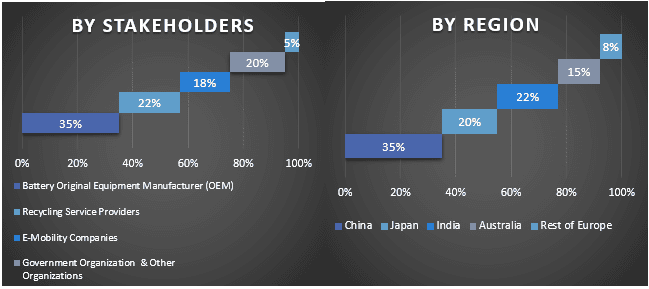
Market Engineering
The data triangulation technique was employed to complete the overall market estimation and to arrive at precise statistical numbers for each segment and sub-segment of the Asia Pacific battery recycling market. Data was split into several segments & sub-segments after studying various parameters and trends in the areas of chemistry and source in the Asia Pacific battery recycling market.
The main objective of the Asia Pacific Battery Recycling Market Study
The current & future market trends of the Asia Pacific battery recycling market were pinpointed in the study. Investors can gain strategic insights to base their discretion for investments on the qualitative and quantitative analysis performed in the study. Current and future market trends determined the overall attractiveness of the market at a regional level, providing a platform for the industrial participant to exploit the untapped market to benefit from a first-mover advantage. Other quantitative goals of the studies include:
- Analyze the current and forecast market size of the battery recycling market in terms of value (USD). Also, analyze the current and forecast market size of different segments and sub-segments.
- Segments in the study include areas of chemistry and source.
- Define and analyze the regulatory framework for the battery recycling
- Analyze the value chain involved with the presence of various intermediaries, along with analyzing customer and competitor behaviors of the industry.
- Analyze the current and forecast market size of the Asia Pacific battery recycling market for the major region.
- Major countries of regions studied in the report include China, Japan, India, Australia, and the Rest of Asia Pacific.
- Company profiles of the battery recycling market and the growth strategies adopted by the market players to sustain in the fast-growing market.
- Deep dive regional level analysis of the industry
Frequently Asked Questions FAQs
Q1: What is the current market size and growth potential of the Asia Pacific battery recycling market?
Q2: What are the driving factors for the growth of the Asia Pacific battery recycling market?
Q3: Which segment has the largest share of the Asia Pacific battery recycling market by chemistry?
Q4: Which region will dominate the Asia Pacific battery recycling market?
Related Reports
Customers who bought this item also bought







